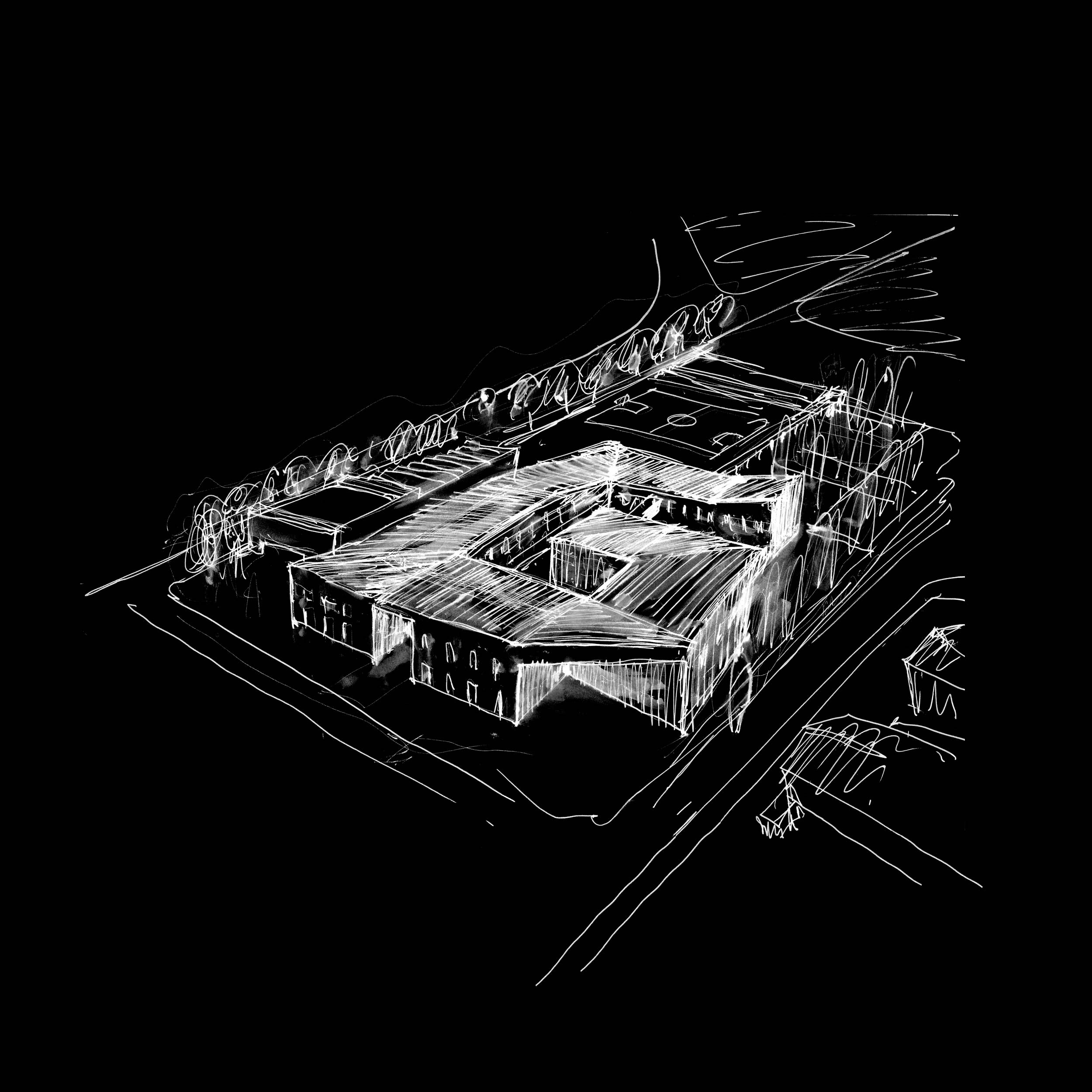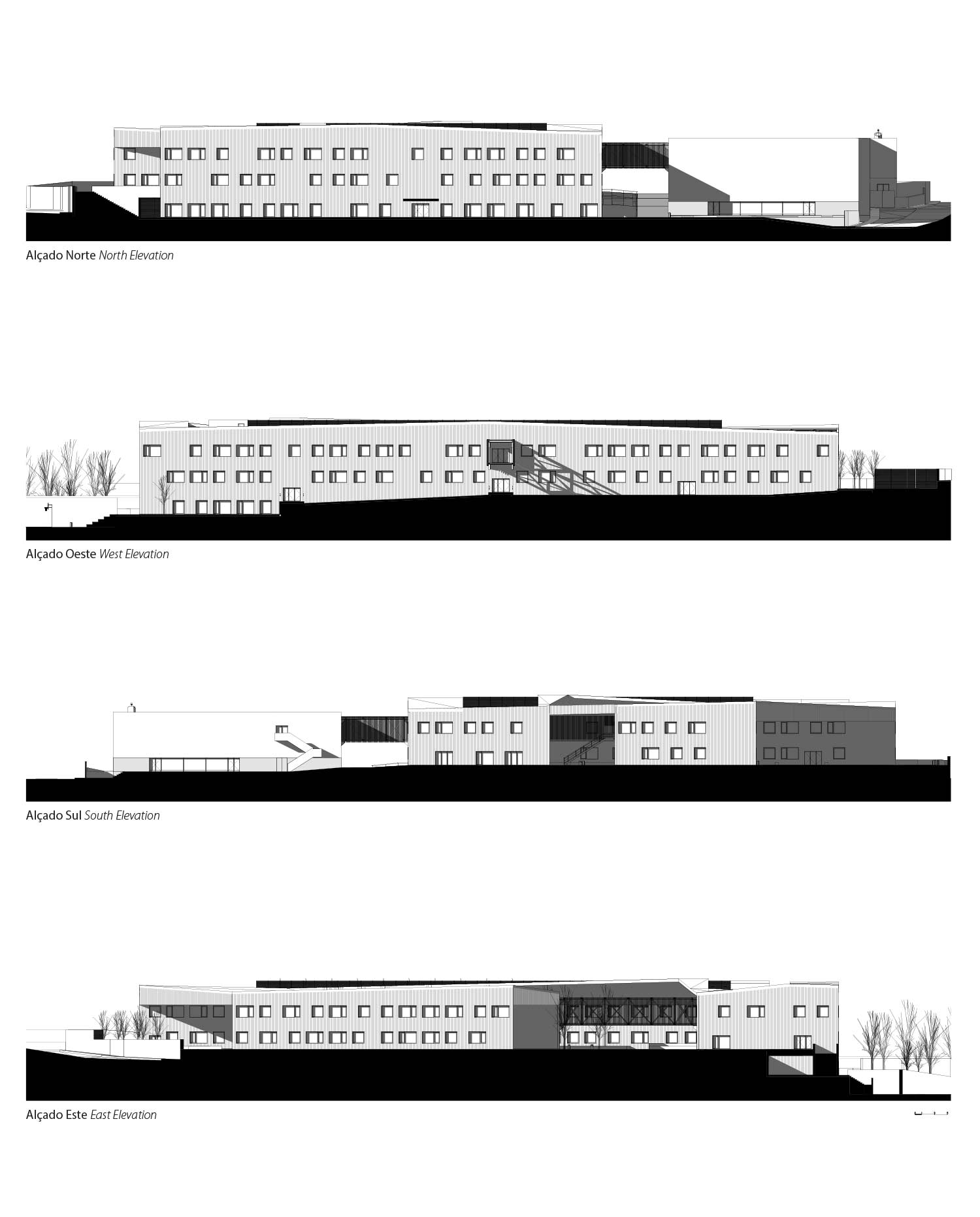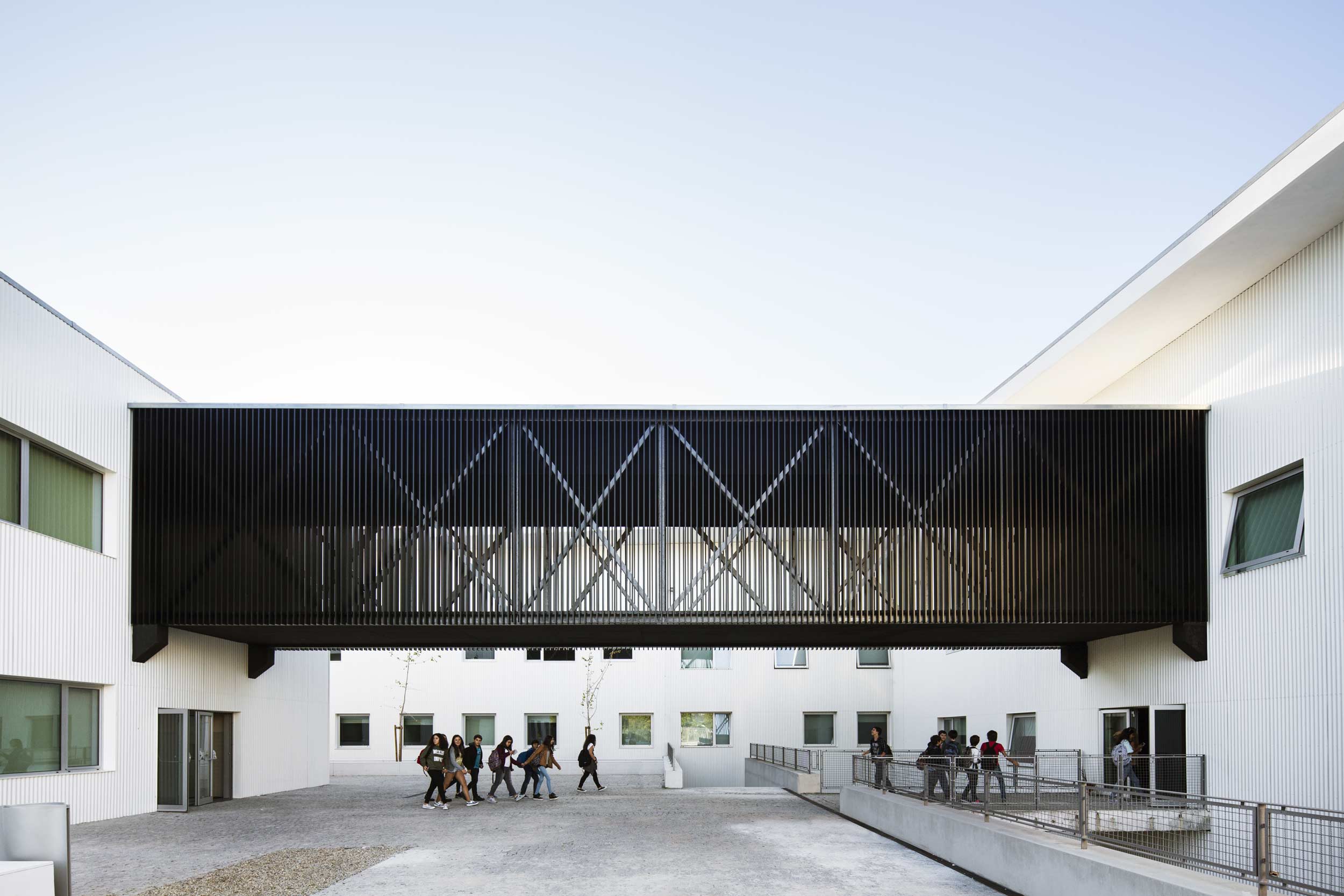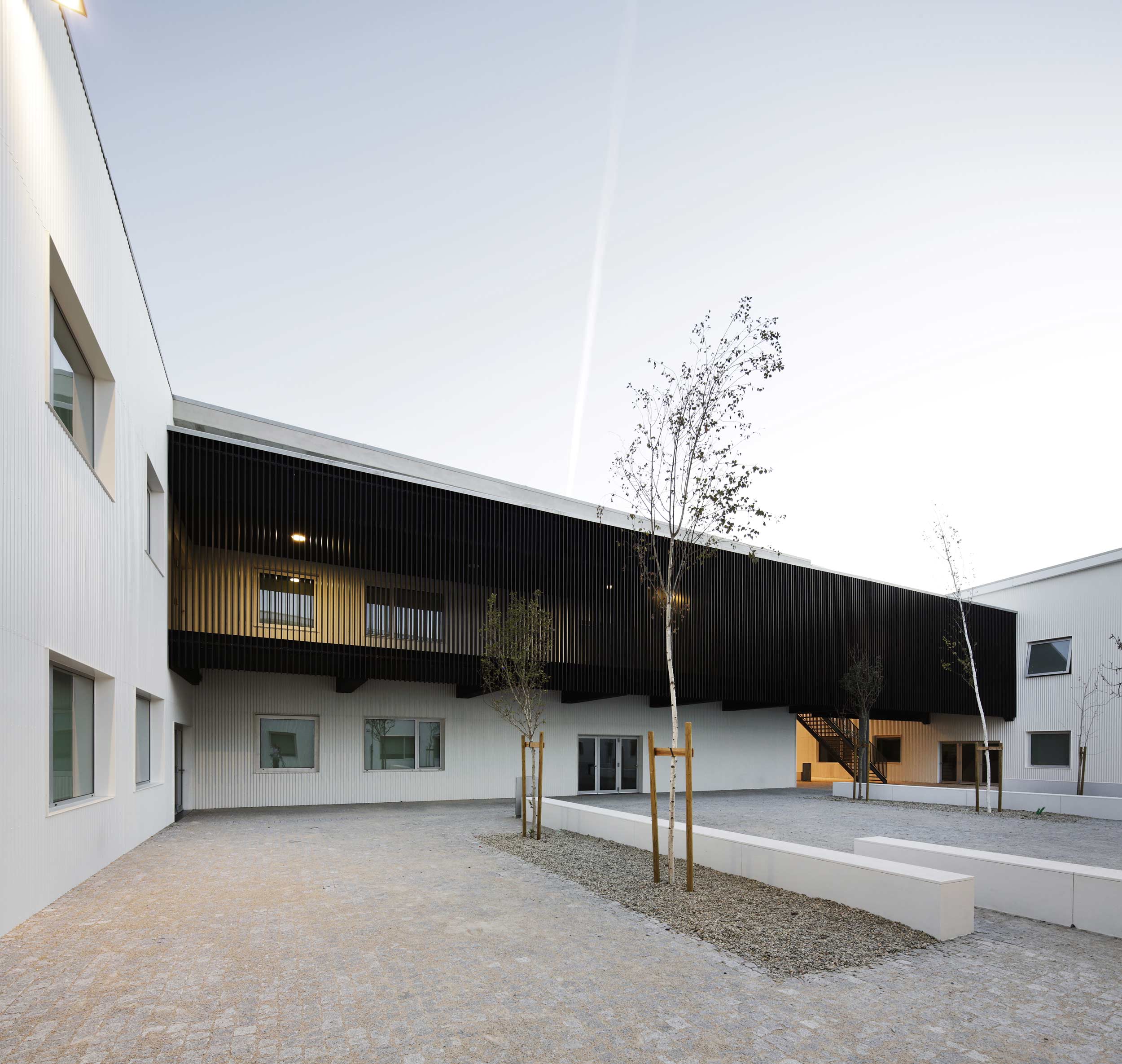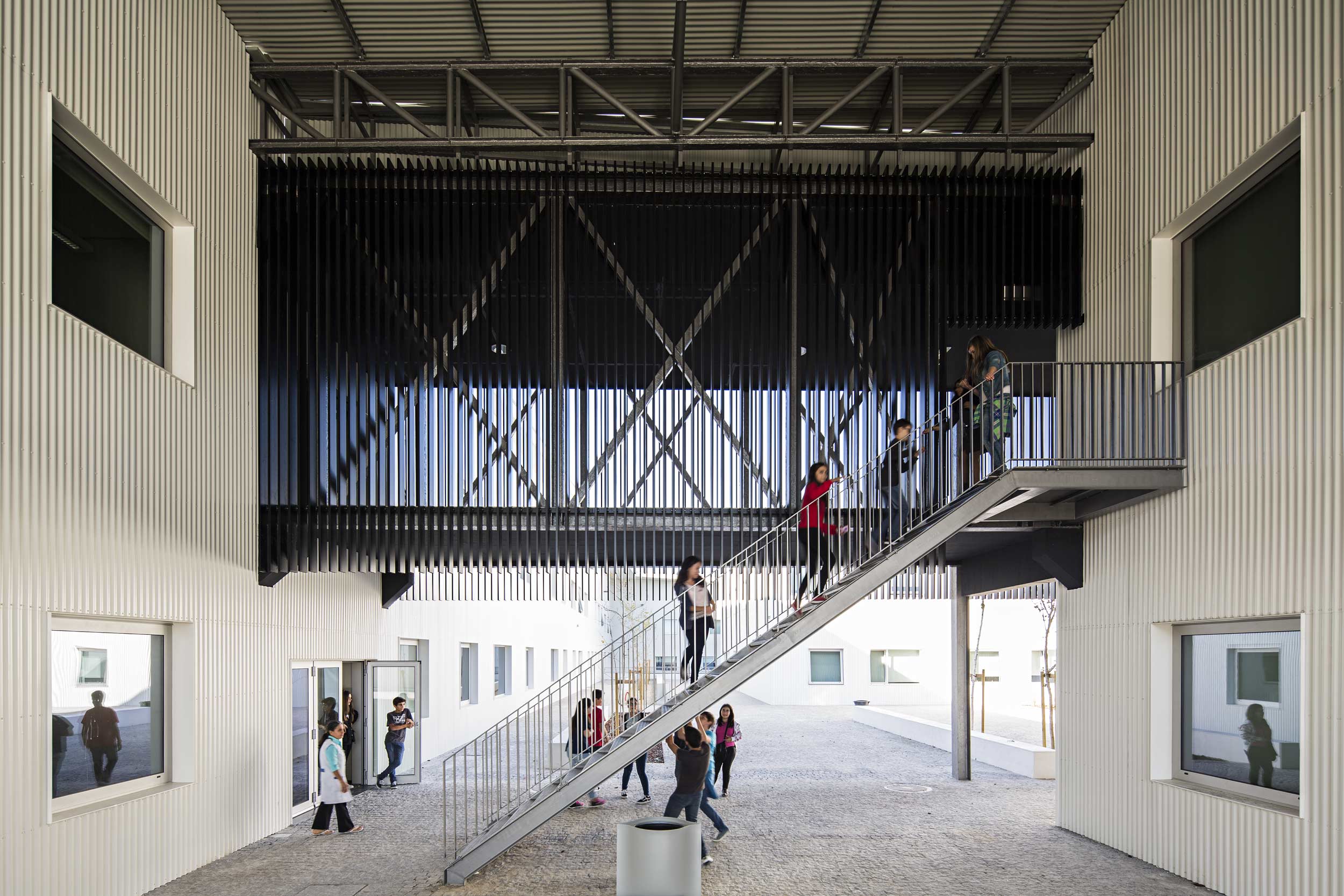Gravida proin loreto of Lorem Ipsum. Proin qual de suis erestopius summ.
Recent Posts
Sorry, no posts matched your criteria.
This project to rehabilitate and extend the existing school facilities is part of the programme for modernising high schools, managed by Parque Escolar EP.
An analysis of the existing conditions reveals a heavily pre-fabricated pavilion-style school from the 1970s, which is severely run down and which did not seem capable of accommodating the required number of students.
The scattered pavilions, with old and dirty walls, were defined by protected windows conveying the feeling of a war scenario. The commission required the building intervention to permit an estimated 1800 students to be accommodated.
We questioned and tried to understand the context, the place, the people and the students, their secret desires, their joys and sadness, the teachers and those in charge of the school. We discovered immense joy and an irreverent desire to teach even with no conditions, and in any circumstances. We shared the view that a school is not just a building, an organised space, or a sum of values and costs, but a social place where people meet and identities are constructed.
“Spaces for discovery and ease of use, spaces that are open to experimentation and freedom to flow”, they told us. The intention to embrace the four existing pavilions, establishing interior continuity, making connections, building bridges and encouraging circulation within a closed circuit are simply the expression of that wish.
As the project evolved, the school’s entrance was moved to the north, nearer to the urban area, thus creating a different relationship between the school and its surroundings.
More than a new building, the project sought to develop a new interpretation of the teaching space, according to its actors and close to that of its users. Here continuity of the community’s aspirations, integration, adaptation, flexibility, freedom and fluidity are concepts that cannot be detached from this intervention.
Location
Espinho
Project
2011_2012
Client
Câmara Municipal do Marco de Canaveses
Architecture’s Coordination
Nuno Lacerda Lopes
Architecture Colaborations
CNLL | Márcia Areal, Vanessa Tavares, Natália Rocha, Augusto Rachão, Nuna Castro
Engineering
Transnética | Papel Principal
Gross Building Area
17.095 m2
3D Simulations
CNLL
Model
CNLL
Photography
Nelson Garrido
